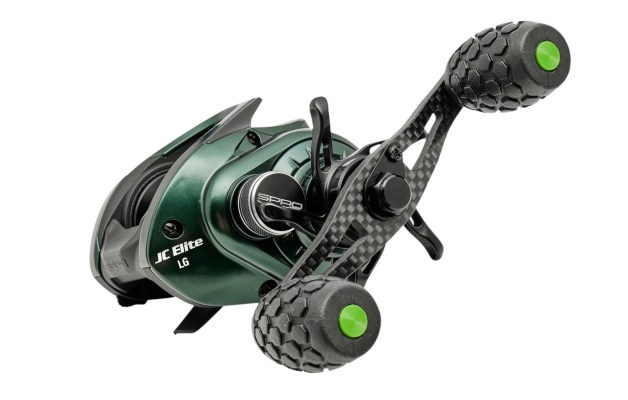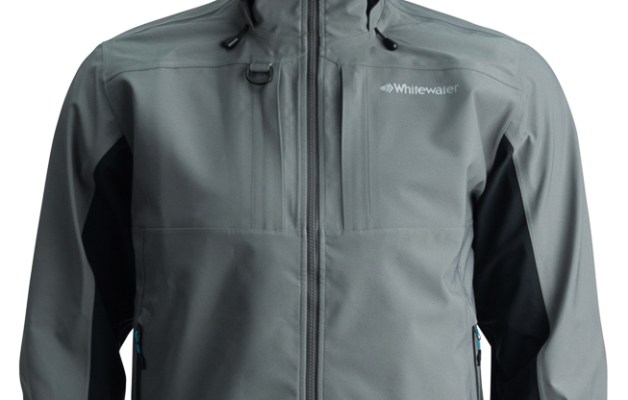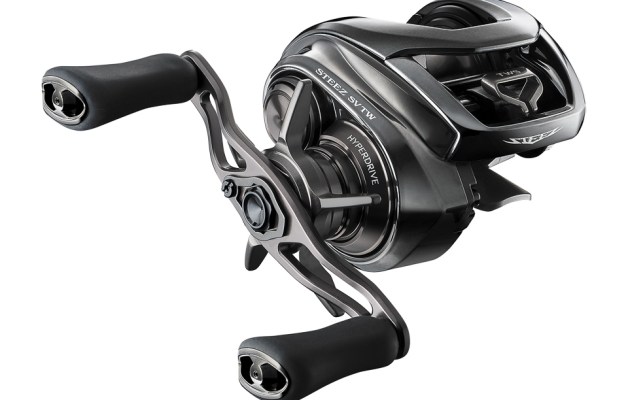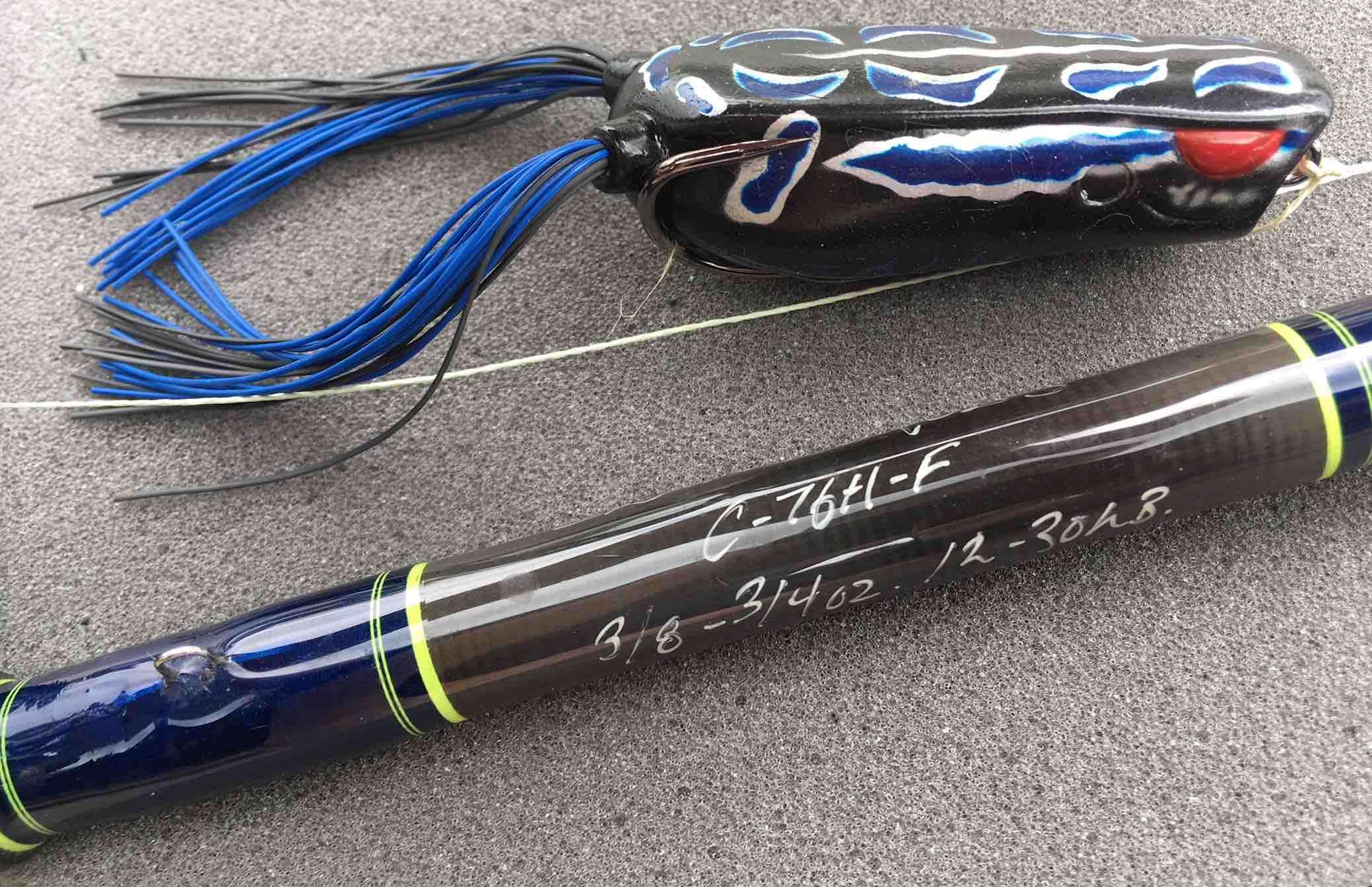
Back in early April, I wrote an article for Bassmaster.com giving readers a behind-the-scenes look at rod builder Gregg Elliott Thorne and the innovative designs featured in his line of Elliott Fishing Rods; click here to check it out.
As I stated then, you’ve probably never heard of the company. However, if you’re a serious bass angler then you owe it to yourself to become familiar with Elliott Fishing Rods. This spring and early summer I’ve been field testing two of Gregg’s favorite models, one casting and one spinning, and my impressions are detailed below. (Spoiler alert: Both sticks are crazy-good.)
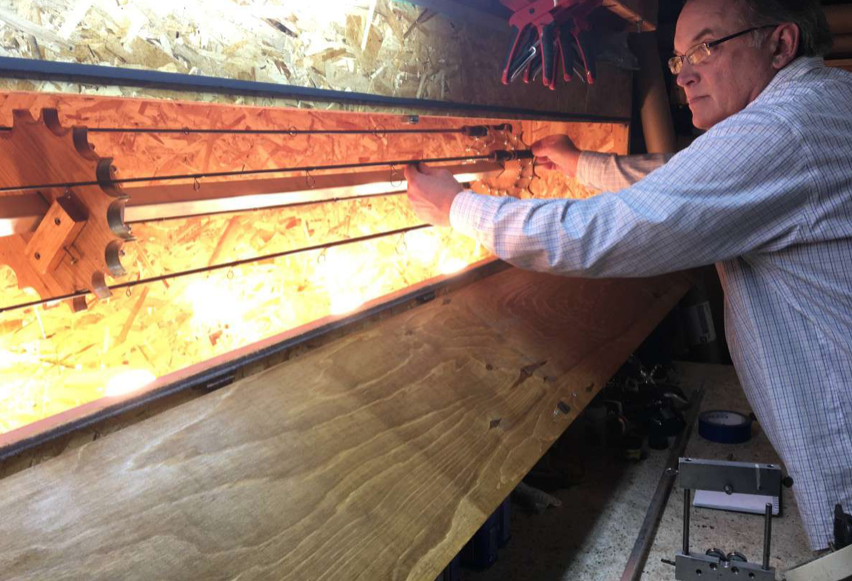
Fantastic Froggin’ Rod: C-76H-F
Like you, I love to catch largemouth bass on hollow-bodied frogs. And even though the rod racks mounted on my garage ceiling are lined with rod-and-reel combos, I’ve never been 100% satisfied with the performance of any of my heavy-duty casting rods when it comes to fishing frogs.
Some of my casting rods have a light enough tip to provide accurate casting with lightweight frogs, but after a bass inhales the lure, the rod doesn’t quite have the backbone (power) needed to set the hooks and extract the fish from the slop. Conversely, my casting rods with enough power to seal the deal after the strike have rod tips that are too stiff for easy casting.
It’s gotten to the point where I have to tote two frog rods, which isn’t a problem in my Skeeter, but is a hassle when I fish from my kayak or 12-foot johnboat. Depending on cover thickness, wind and desired casting distance, I am constantly swapping frog rods.
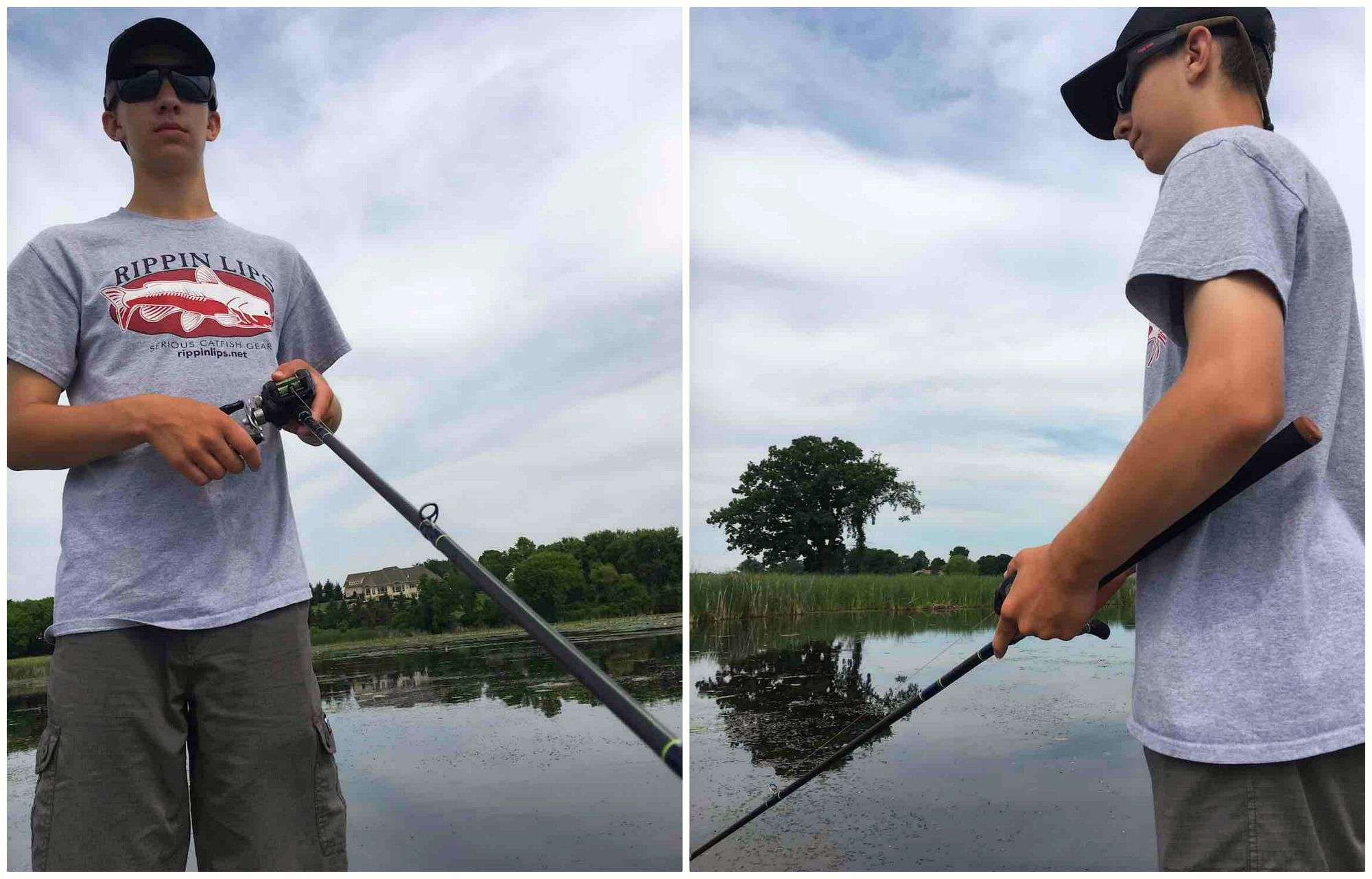
“Dave, I know exactly what you mean,” said Gregg Thorne as we talked in his Minnesota rod building shop. “I’m excited for you to try a new rod blank I designed specifically for frog fishing. The C-76H-F is 7-foot 6-inches long. In terms of power, I rate it as heavy (H); the action is fast (F). You tell me after fishing with it, but I think I hit the sweet spot in terms of rod performance with hollow-bodied frogs of all shapes, sizes and weights.”
C-76H-F On-the-Water Impressions
I mount a Lew’s BB2HZ baitcaster to the C-76H-F, spool up with 65-pound braid and tie on a half-ounce SPRO Bronzeye Pop 60 frog. The pad fields on my home Minnesota waters have finally filled in, and I’m hoping that the post-spawn largemouth lull is finally finished.

As I ready to cast, I immediately notice that the C-76H-F is perfectly balanced. Missing is the typical tip-heavy feel of my most powerful froggin’ rod. The crosswind is moderate, about 10-15 mph, so I fire a cast planning for a bit of wind-drift. The only problem is the SPRO sails farther than it has ever flown before from my boat, landing in an overhanging willow tree.
Chuckling as a shake the rod tip to free the tree frog, I realize that there will be a bit of a learning curve with this new rod. In other words, I need far less effort on my part to hit my targets.
Over the next half hour, I catch a few bass — no big ones — but learn a lot more about the C-76H-F. As I stated earlier, the rod propels a frog to distances far beyond anything I’ve experienced before. During the retrieve, the rod’s fast and sensitive tip allows me to stay in contact with the lure. And thanks to the long handle (just shy of 13 inches), the rod rests very nicely under my arm, which makes for a comfortable retrieve.
While the handle feels like natural cork, Gregg Thorne uses a proprietary material called Syncork on his casting and spinning rods. (I explained this material in detail in my previous Bassmaster.com article.) The made-in-the-USA material is lighter and denser than cork, can’t absorb water, can’t dry out or crack, and is resistant to insect spray and other chemicals. In fact, Gregg assembles each handle one Syncork ring at a time and then uses a hand lathe to shape it. He showed me some Syncork handles on rods that were a decade old (and heavily used) that looked like new. Amazing.

In terms of power, the C-76H-F delivers in spades. Because the rod balances so well (it just feels so much lighter than my other two go-to frog rods), I feared it wouldn’t have the strength to drag bass from heavy cover, but I was wrong — way wrong. The length is perfect in my opinion for keeping hooked bass from diving into heavy cover.
In fact, to really test the rod’s power, my 15-year-old son and I cast large spinnerbaits for northern pike with the C-76H-F, and during a 2-week span we catch a handful of weed-dwelling pike that measure 36 to 41 inches. Trust me — this froggin’ rod can manhandle any bass you’re likely to encounter.
One final note: You know how some casting rods seem to work best with only particular reels or line types/weights? That’s not the case with the C-76H-F. I experiment with five different casting reels on this rod and each combo performs perfectly. Like a centerfire rifle that is accurate with a wide variety of bullets, this rod isn’t fussy when it comes to reels and line.
I have a new favorite frog rod. Period. The only problem is my son/fishing partner, who just happens to be named Elliott, also loves the Elliott Rods C-76H-F, and he calls dibs on it every time we share the boat. “My name is on the rod, Dad.” How can I argue with that?
Finesse With a Twist: SJ7ML-F
While many lakes in the Midwest are outstanding for shallow-water largemouth, we’re blessed with deep-weedline fish, too. And then there’s smallmouth bass, perhaps my favorite fish to target when you have the chance to catch a tank.
As Elliott and I pack for a 3-day roadtrip to South Dakota, I grab the 7-foot, medium-light, fast-action spinning rod — model SJ7ML-F — loaned to me by Gregg Thorne. It feels good without a reel, but after I tape a classic Garcia Cardinal 4 to its offset Tennessee-style handle, Elliott can hardly believe what he’s feeling.
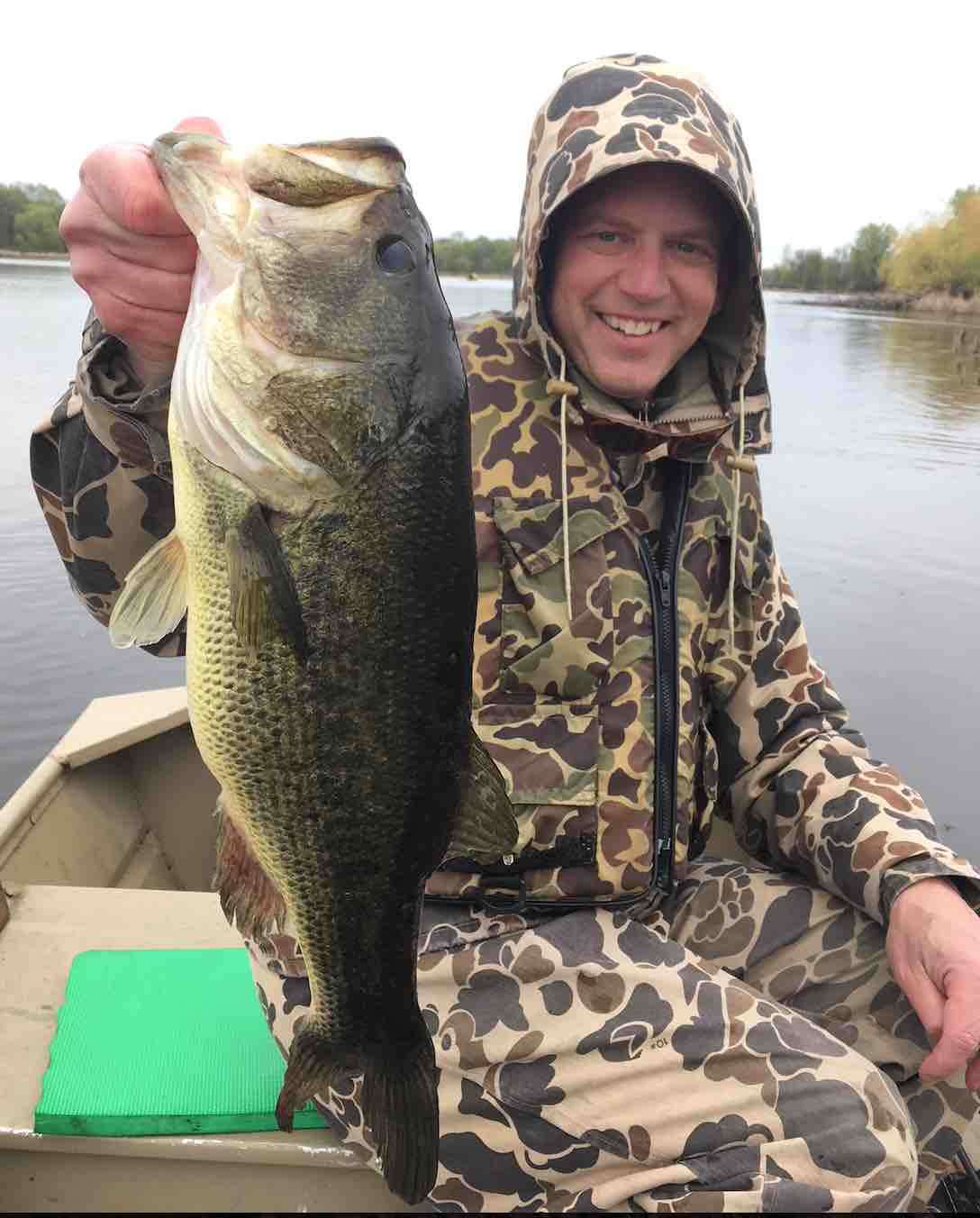
“Dad, this is insane,” he says, shaking his head. “The rod is 7-feet long but feels like a feather. How is that possible?”
Rather than try to explain the science/physics behind Gregg Thorne’s innovative offset handle design, I simply let him watch the short video below. (insert video below). “I can’t wait to try it on smallies,” is all he says after watching the clip.
SJ7ML-F On-the-Water Impressions
Fast-forward to the following day and Elliott and I are in South Dakota pursuing springtime smallmouth bass. Some fish are bedded but most are pre-spawn, and the wind is howling at 20 mph (it ALWAYS blows in SoDak). Suffice it to say that jigging will be a challenge.
Shortly after I drop the trolling motor into the water, Elliott hollers “Fish on!” He’s using 8-pound mono and a 1/8-ounce roundhead jig with a 4-inch curly-tail grub. The bronze beauty puts up a great fight, and soon I slip the 17-incher into the net. After a quick photo session, Elliott releases his first decent-size SoDak smallie and continues to grin ear to ear.
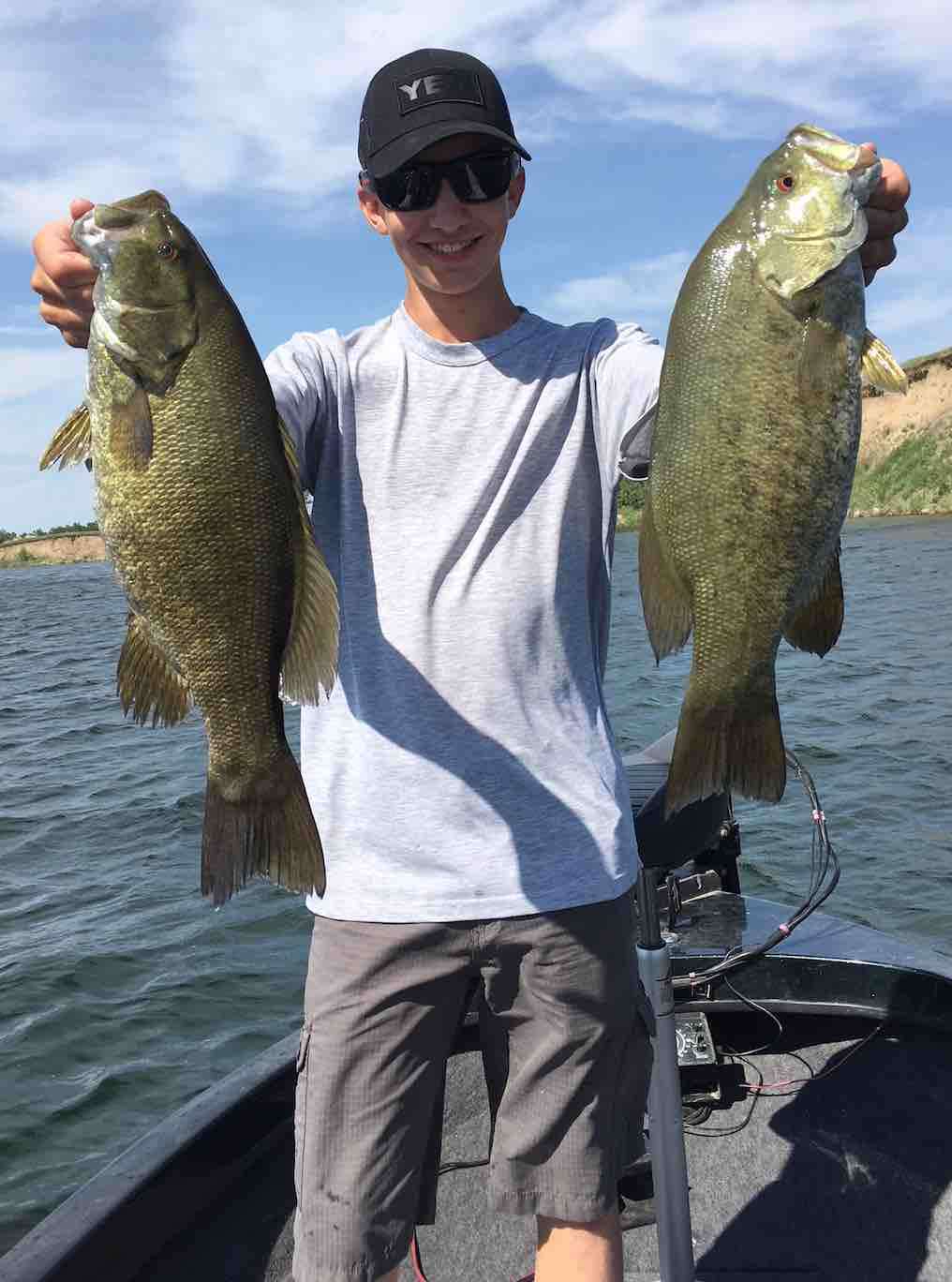
Over the next few hours, Elliott hammers big smallmouth bass on his 7-foot ML Elliott Rod. At times he switches jig size and soft plastics type, but it’s clear his ability to detect subtle strikes in the heavy wind is outstanding. More than once he says, “Dad, this is my new favorite rod.”
Since that SD trip, I’ve had the chance to jig with the SJ7ML-F — Elliott wouldn’t give it up for a second during our smallmouth adventure — and I agree completely with his love of this spinning rod. The innovative offset Tennessee handle design keeps the rod balanced and comfortable to hold, and the one word that comes to mind during the cast is “precision.” The fast action is fantastic on the hookset, and the medium-light power makes for an enjoyable fight. The lightweight tip and overall rod balance allows you to feel subtle bites, and I think it would be great for everything from standard jigging like we did in SoDak, to drop-shotting in deeper water. Anytime you want to use 1/8- to 3/8-ounce lures and 6- to 12-pound line, this SJ7ML-F is a finesse machine.
One note about spinning reel sizes: In my opinion, far too many bass anglers opt for spinning reels that are too small. Do yourself a favor and leave the 1000, 2000 and 2500 series spinning reels for your ultralight panfish rigs. Step up in size to 3000, 3500 and even 4000 series (my preference) spinning reels and you’ll immediately notice the advantages. From less line coil and longer casts, to stronger drag systems and better overall rod/reel balance, a bigger spinning reel simply makes the most sense for bass fishing. Give it a try and you’ll never look back.
Tennessee Handle Taping Tip
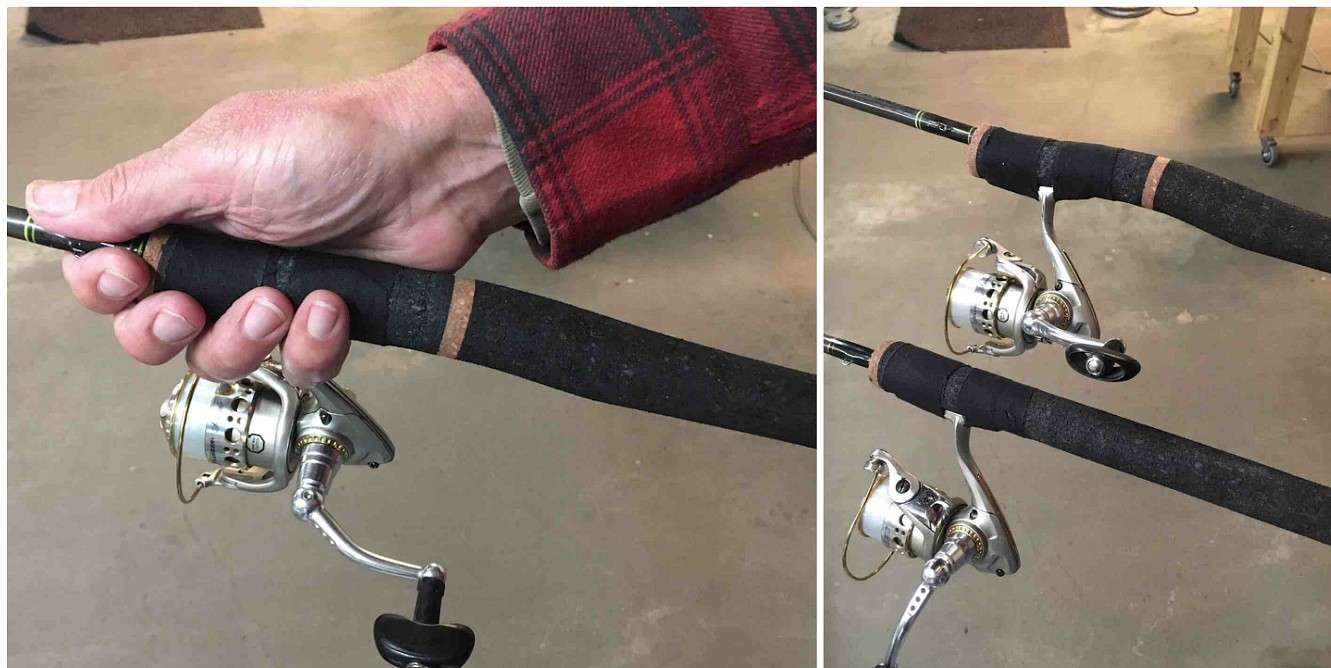
While standard electrical tape works okay for securely attaching a spinning reel to a Tennessee handle, a better option was shown to me by Gregg Thorne of Elliott Fishing Rods. The key is to cut two 4-inch-long pieces of strapping tape (the type that’s 3/4-inch-wide works well). Strapping tape is made with glass filaments that give it super strength and zero stretch.
The mounting process is easy: Place the reel where you prefer on the handle (near the front is best for balance) and then tightly wrap each band of strapping tape over the reel base and around the Tennessee handle. Use a couple bands of black electrical tape or black athletic tape to cover the light-colored strapping tape and cover the entire reel base. Stretch the electrical or athletic tape as you wrap it. Trust me, no matter how big of a bass you hook, the reel won’t move a millimeter. As for electrical tape vs. athletic tape: “I prefer black athletic tape,” Gregg said, “because it matches Syncork in both look and feel.”

